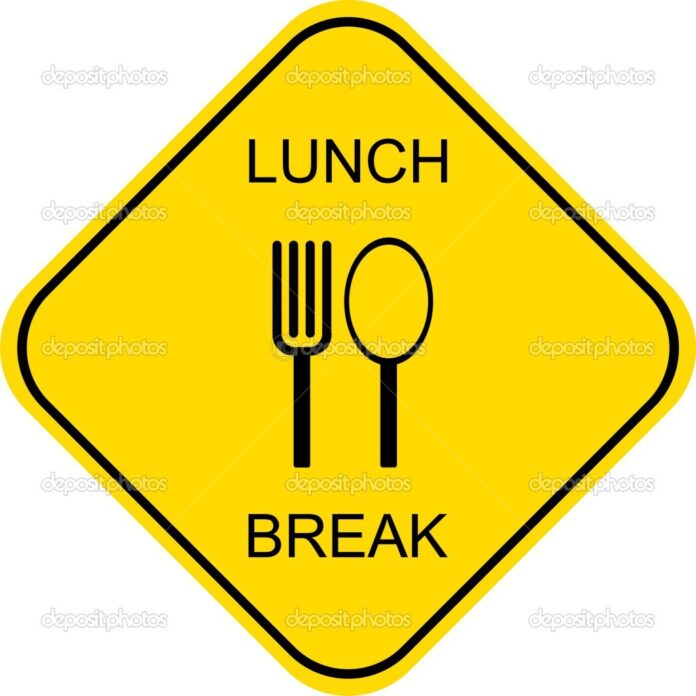It is always 12.30 pm somewhere in the world; every second, lunch breaks at work are starting in some part of the planet. But over the last decade, they have become increasingly shorter, been skipped, or spent in front of a screen. This is true today more than ever, in the work from the age where employees are hooked to their screens from morning to evening without taking the necessary breaks at home.
It is indisputable that the time devoted to the famous lunch break is evaporating as the years go by, all around the world. Lasting 35 minutes on average globally, its length varies from country to country: in Greece, it is allocated 19 paltry minutes, while Japan still enjoys a generous 45 minutes.
At a time when the boundaries between our professional and personal lives seem increasingly blurred, and when eating habits are central to our concerns, how can this important break be rehabilitated, and how can employees take ownership of it once again?
Lunch Break, an Opportunity for a Breather
A break from stress and screens, better quality sleep, increased productivity, improved stress management, reduced feelings of fatigue or even exhaustion are some of the frequent discussions that take place around us. Many international studies have shown that there is a long list of benefits to be gained from a real break in the middle of the day. While the break and its length are important, so is its quality. An hour’s lunch break devoted to playing an online game would cancel out any potential benefit.
While lunch breaks are usually destined for eating, it can take many other forms: bonding with colleagues (see our article on connecting through sharing meals), culinary discoveries, or simply a moment of relaxation during the day.
Lunch Break is Not Just for Eating
Its name does not reflect the fact that the lunch break is now increasingly devoted to other activities. Taking a power nap, doing personal jobs, meditating, or practicing sport are all increasingly popular choices.
With an average gain in productivity of 15% to 20% for each employee engaging in physical activity at lunchtime, large businesses have not been slow to take this information into account. Moreover, a growing number of businesses are building sports facilities and personalized sports programs available to their staff.
Although it can be a good thing to devote this break to doing something other than eating, there are nonetheless some traps to avoid:
a) In France and the United Kingdom, 16% of employees spend their lunch breaks making headway with work, without having any real intermission during their day
b) In Western Europe, nearly 30% of employees are thought to spend a large portion of their lunch break on social media, even when having a meal with colleagues
c) In Brazil, 56% of employees take a lunch break that exceeds 1 hour 10 minutes, even if it means finishing work later and impinging on their private lives
Although many obstacles to an ideal lunch break remain, it is down to companies to ensure that this essential part of their employees’ daily routines is preserved, by providing necessary benefits to the staff.
Saving Time: The Secret to Successful Lunch Breaks
Time, which cannot be condensed, is the single biggest thing all employees chase after at work. Those 35 brief minutes that the planet devotes, on average, to the lunch break are no exception to the rule: every minute counts, and avoiding going out, making detours or queuing becomes a precious way to save time. Many operators in Food-Tech and corporate food services have drawn on this assessment to develop new offers.
Saving Time Spent in Going Out
Key operators in the home meal delivery sector have now set their sights on conquering meals at the workplace. Combining a varied offer with a user-friendly ordering experience, these services promise speedy and efficient delivery. This is sure to incite even those who are in a hurry to have something to eat. But these food delivery heavyweights are now facing the emergence of a new form of competition, which in addition to delivery, is making the nutritional quality of the food on offer its stock-in-trade.
Saving Time and Eating Well
Employees are no longer satisfied with pizzas or biryani boxes delivered in 30 minutes at their workplace or homes. They wish to be attentive to their diet and they want to eat fast but eat well. With evolving food choices, various organisations are ensuring that healthy, fresh and varied meals are delivered to employees thereby enhancing their meal experience.
Saving Time and Enjoying the Freedom of Choice
Lastly, there are those who have chosen to leverage food at work as an area to provide their staff with efficient and personalised tools. Innovative applications like the Sodexo-Zeta app for employees help them manage their meal benefits and track spends, locate nearest outlets, avail exclusive offers and much more. Employees get access to best in class eateries & online food portals and enjoy maximum freedom of choice.
Downtime to refresh and recharge is a crucial part of workday, and when used effectively, it enables employees to continue the rest of the day at the best of their capabilities. Therefore, integrating and encouraging lunch breaks for employees must become a priority for all kinds of organisations! #KhabarLive #hydnews







